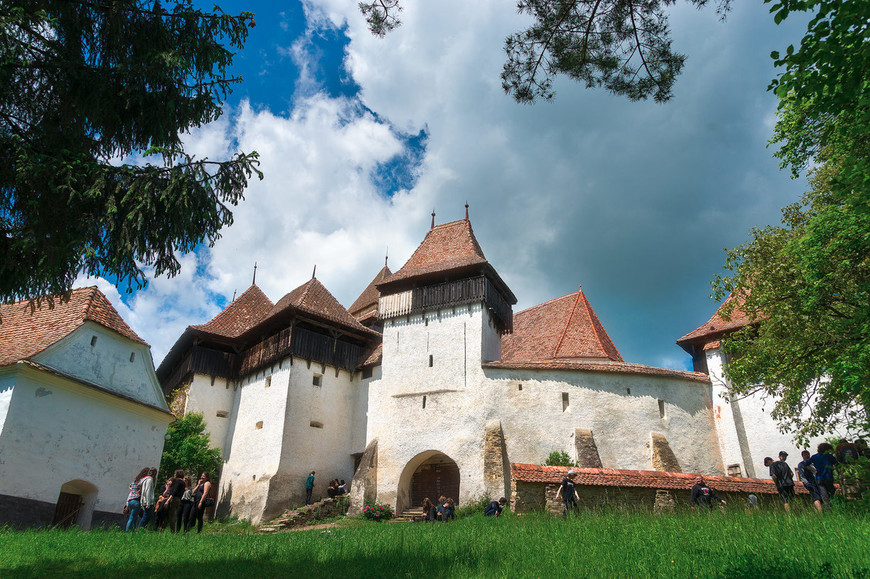In a village formally known as the Rupea Chair, this great fortress was built in the 13th century. The church in the fortress, was originally built by the Szeklers, to be extended and rebuilt by the Saxons, suffering many transformations over time. The classic-style altar has organs on top and the balconies are painted in Baroque style. Modest and quiet, the church has white walls and wood flooring, and all the shooting holes make you realise how unsafe and tough life was when it was built.
The gate tower has a small door through which people enter the fortress and within the walls of it there are storage spaces for grains. The "bacon tower" is also present in Viscri and was used as a warehouse and a cool room at the same time.
The southern bastion has been a two-story ethnographic museum since 2003, being one of the most well-established museums of the Saxon culture in Transylvania. Weaving machines and other woollen fabrics, lingerie, coins and old banknotes are to be found here.
All the families on the same street were organised into a neighbourhood, which had a leader, and some cherished wooden objects were used on the occasion of "the day of reconciliation" held on the Tuesday before Easter, when the neighbours came together and paid fines if they were absent from the community service or even from some of the funerals.
Nowadays, many good things are being said about Viscri due to the excellent results of the Mihai Eminescu Foundation, sponsored by Prince Charles, whose main objective is to preserve the traditional Saxon architecture, which is quite difficult considering that many houses are abandoned and in an advanced degradation state.
The Prince of Wales even has a beautiful home in this village, originally built in 1700 and recently restored. The house has five bedrooms, a classroom, a café and is often used for free courses offered by the Mihai Eminescu Foundation regarding traditional fabrics, rural entrepreneurship, agriculture and restoration programs. During the period when no courses are organised, the house can be rented by the tourists.



Comments